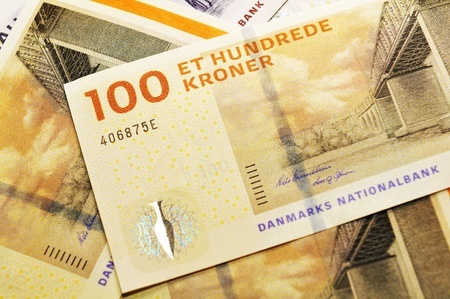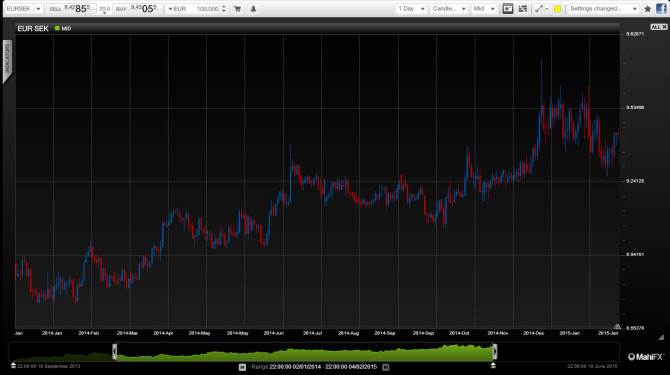Quantitative easing has been around some seven years in its current form, but now another monetary policy tool is gaining momentum called negative interest rates. This is likely to become a weapon of choice in the currency wars and a key driver of exchange rates.
Since the oil price plunge late last year (though it has bounced recently) a flurry of interest rate cuts have been triggered around the world with two countries opting for negative interest rates — Switzerland (-0.75%) and Denmark (-0.2%). Both countries are hoping to drive away capital inflows by charging investors for holding their currencies as opposed to creating more money as happens with QE.

By Justin Pugsley, Markets Analyst MahiFX. Follow @MahiFX on twitter
Both are responding to the fierce devaluation policies being pursued in the Eurozone by the European Central Bank (ECB deposit rate -0.2%). These policies are being pursued to manipulate exchange rates. Both are trying to preserve their export competitiveness with Denmark battling to maintain DKK’s exchange rate band with the EUR.
Should the EUR keep falling, Denmark is likely to go deeper into negative interest rate territory and possibly even move its trading band with the EUR upwards, which would involve negotiations with the Eurozone as it is in the European Exchange Rate Mechanism (ERM).
Another domino resulting from the ECB’s monetary policy could eventually see Sweden’s Riksbank also go into negative interest rate territory to put downward pressure on SEK. Its repo rate is currently zero. In the UK, providing the real estate market doesn’t overheat, it could see the Bank of England delay its much mooted interest rate rise well into 2016.
For now, worries about the Eurozone and political uncertainty ahead of the May general election are working their magic in keeping GBP relatively weak – though it has been gaining against the EUR.
EUR/SEK – could Sweden be the next European country to go negative on interest rates?

Negative interest rates may curb investment
The US Federal Reserve and the Bank of England did not implement negative interest rates and relied on QE to revive their economies. The Bank of Japan, so far at least, is pursuing the same line.
But should negative interest rates become more prevalent around the world, say to combat deflation, as well as keeping downward pressure on currencies it could have a number of consequences if pursued for too long.
Many would argue that negative interest rates are a correct response to deflationary pressures where the value of money (and debt) increases in value relative to goods and services in the economy.
However, negative interest rates are a sort of tax on banks, which is passed onto savers, further eroding the earning power of money held by the growing army of increasingly angry pensioners who vent their feelings at the ballot box. Taken to its extreme people could start holding their money in cash further holding back bank lending capabilities.
Yields on safe assets, such as highly rated government bonds, tend to be driven into negative territory as well, which also drags down returns on riskier assets. One consequence of this could be to stall investment in new plant, factories and other productive capacity, simply because the rates of return for investors are not high enough to compensate for the risk. This would reduce the growth potential of the economies affected for years to come.
Nonetheless, the big fall in oil prices (if sustained) and of some other commodity groups should be stimulative, but it might not be until H2 that the economic impacts start to be really felt in consuming countries. More economic growth would remove the incentive for countries to pursue aggressive devaluation policies, which are only one step away from potentially damaging trade wars.
